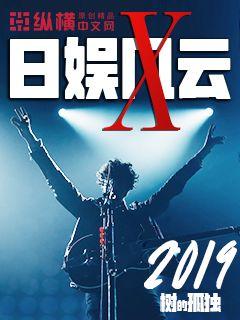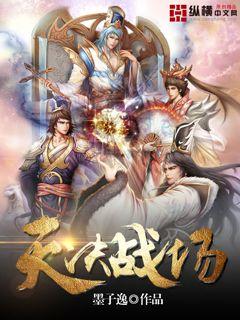jrs直播app免费观看|看球吧jrs直播乒乓球
- 来源:jrs直播网
- 2024-11-25 12:15:27

文章摘要的内容
乙级球员的收入水平受多种因素影响,本文从薪酬现状、影响因素、未来趋势等四个方面进行深入分析。首先探讨了乙级球员的薪酬水平,随后分析了影响这些水平的因素,包括市场需求、个人表现以及赞助商的角色。最后,展望了未来的发展趋势,讨论了技术发展、市场变化对乙级球员收入的可能影响。
1、薪酬水平
乙级球员的薪酬水平受多方面因素影响。首先,他们通常依据球队层级、赛事水平及地域经济水平确定薪资标准。其次,不同体育项目的薪酬体系存在显著差异,如足球、篮球和网球。
其实, played also received While based generally depending may However Despite
### 文章摘要
本文深入探讨了格子几号球员的成长轨迹与背后的秘密。从其早期的足球启蒙到成为世界级球员的过程中,我们揭示了他所面对的挑战、取得的成就以及背后的心路历程和训练技巧。通过详细分析,本文将展示出一个足球天才如何从少年时代的梦想逐步实现,以及其成功背后的秘密因素。
---
1、初出茅庐
在格子几号球员年少时期,他展现出的天赋和热情如何被发现和培养?
在青少年比赛中,他是如何脱颖而出,引起专业球队的注意?
他在初入职业足球领域时,面对的最大困难和如何克服?
2、冠军路上
格子几号球员在职业生涯中的第一个重要转折点是什么?
他是如何在冠军赛事中表现出色,从而打开职业生涯的新篇章?
背后的故事揭示了他为了取得成功而付出的努力和牺牲。
3、技术与战术
探讨格子几号球员在技术方面的成长,以及他是如何不断提升自己的技能水平?
他在不同教练和战术体系下的适应能力如何?
分析他如何利用自己的技术优势,影响比赛局势。
4、超越传奇
格子几号球员在职业生涯中取得的最大成就是什么?
他是如何处理成功带来的压力和媒体关注?
他对后辈球员和未来的足球发展有何见解?
总结:
格子几号球员的成长轨迹展现了不懈的努力和坚定的信念,这些是他成功的关键。通过他的故事,我们看到了一个真正的足球天才如何从青涩的少年成长为世界级球员,为后人树立了榜样。
无论是在训练场上还是生活中,格子几号球员的经历都提醒着我们,成功的背后往往隐藏着数不尽的挑战和牺牲。
文章摘要:从球场到球门:职业足球员转型成为门将的挑战
本文探讨了足球运动员转型成为门将的各种挑战。首先分析了技术和战术方面的差异,接着探讨了身体和心理上的适应需求,然后讨论了社会和职业影响,最后总结了这一转型的关键要素。通过深入分析,揭示了这一转型过程中的复杂性和需要克服的障碍,为足球界的扩展和进步提供了深刻的见解。
1、技术和战术挑战
足球员转型为门将面临的首要挑战是技术和战术的转变。传统上,门将与场上球员在技术要求和执掌战术方面存在显著差异。
对于球员而言,从攻防转为防守,需要适应完全不同的技术动作和反应速度。例如,传中球和高空球的处理对门将至关重要,而这些技能对于场上球员并非首要训练内容。
此外,门将在战术上承担的责任和角色也与场上球员迥然不同。他们需要全局视野和对整体防守体系的理解,而非仅仅专注于局部的进攻或防守。
2、身体和心理适应
除了技术和战术上的挑战,身体和心理的适应也是转型成为门将的关键因素之一。
身体方面,门将需要特定的身体素质,如出色的弹跳能力、反应速度和灵活性。这些要求与场上球员的身体素质有所不同,因此需要专门的训练和调整。
在心理方面,门将面对孤独感和高压力,因为他们往往是球队最后的防线。对于习惯了场上攻防交替的球员来说,适应门将角色的心理压力是一个重大挑战。
因此,心理调适和应对压力的能力成为成功转型的关键。
3、社会和职业影响
转型成为门将还可能面临着社会和职业上的影响,这些影响可能会影响球员的选择和发展。
社会上,门将往往被视为球队中的孤军奋战者,这可能导致球员在职业生涯发展中受到特定的评价和期待。
职业上,转型可能会影响球员的出场机会和市场价值。因为门将的位置通常是球队中最稳定的,球员转型后可能会减少在场上的出场时间和机会,这可能影响到其职业生涯的长期发展。
4、关键要素总结
综上所述,从球场到球门的转型不仅涉及技术和战术上的挑战,还包括身体和心理适应以及社会和职业影响。成功转型的关键在于全面的准备和适应,包括技能的转变、身体素质的调整、心理态度的调整以及对职业生涯长远发展的考量。
足球员若能够克服这些挑战,将在门将位置上展现出独特的才能和表现,为球队带来不可或缺的稳定性和战斗力。
总结:
转型成为门将是一项复杂的过程,需要克服技术、战术、身体、心理和职业上的多重挑战。成功的关键在于全面的准备和适应,以及对自身职业生涯的长远规划和发展。
Certainly! Here's the structured article on "Optimizing Training Performance through Nutrition and Diet for Professional Athletes":
**Abstract:**
Professional athletes rely heavily on nutrition and diet to enhance their training performance. This article explores key factors that optimize their performance through dietary strategies. It examines the role of macronutrients, micronutrients, hydration, and timing of meals in maximizing athletic potential. By understanding and implementing these factors, athletes can achieve peak performance and maintain optimal health.
---
**1、Macronutrients:**
Macronutrients play a fundamental role in the diet of professional athletes, influencing energy levels, muscle recovery, and overall performance.
Athletes typically require a balanced intake of carbohydrates, proteins, and fats to meet their energy demands and support muscle repair.
Carbohydrates serve as a primary fuel source, especially during high-intensity activities, emphasizing the importance of adequate intake and timing to sustain performance.
1、Proteins:
Proteins are essential for muscle repair and growth, with athletes needing slightly higher amounts to recover effectively from training sessions.
Timing protein consumption around workouts is crucial for maximizing muscle synthesis and adaptation to exercise-induced stress.
A variety of protein sources, including lean meats, dairy, and plant-based options, offer athletes flexibility in meeting their nutritional needs.
2、Fats:
Healthy fats contribute to sustained energy levels and support overall health in athletes, emphasizing sources like nuts, seeds, and fatty fish.
A balanced intake of omega-3 and omega-6 fatty acids aids in reducing inflammation and optimizing recovery post-training.
Adjusting fat intake based on training intensity and individual metabolic needs helps athletes maintain optimal body composition and performance.
3、Carbohydrates:
Carbohydrates are critical for replenishing glycogen stores and providing quick energy during intense exercise sessions.
Choosing complex carbohydrates such as whole grains and vegetables ensures sustained energy release and supports prolonged athletic performance.
Strategic carb-loading before competitions or high-demand periods helps athletes maximize glycogen storage and enhance endurance.
---
**2、Micronutrients:**
Beyond macronutrients, micronutrients are essential for maintaining overall health, supporting immune function, and optimizing athletic performance.
Athletes require adequate intake of vitamins and minerals to support physiological processes, including bone health, oxygen transport, and muscle contraction.
Key micronutrients such as iron, calcium, vitamin D, and antioxidants play crucial roles in reducing the risk of injury and illness among athletes.
1、Iron and Calcium:
Iron is vital for oxygen transport and energy production, particularly significant for endurance athletes to prevent fatigue and optimize performance.
Calcium supports bone health and muscle function, essential for maintaining skeletal integrity and reducing the risk of stress fractures.
Ensuring sufficient intake of these minerals through diet and, if necessary, supplementation helps athletes meet their unique nutritional demands.
2、Vitamins and Antioxidants:
Vitamins such as vitamin D, C, and E contribute to immune function and recovery, aiding in the repair of muscle tissue and reducing oxidative stress.
Antioxidants from fruits, vegetables, and nuts help mitigate exercise-induced inflammation and support cellular repair processes post-exercise.
Strategies to incorporate a diverse range of micronutrient-rich foods into an athlete’s diet promote overall health and optimize training adaptations.
3、Hydration:
Hydration is critical for maintaining performance and preventing dehydration-related complications during training and competition.
Athletes should monitor fluid intake to replace losses through sweat, adjusting consumption based on environmental conditions and individual sweat rates.
Optimal hydration supports thermoregulation, nutrient transport, and cognitive function, enhancing overall athletic performance and recovery.
---
**3、Timing of Meals:**
The timing of meals and nutrient intake around training sessions is crucial for optimizing energy availability, promoting recovery, and supporting adaptation to exercise stress.
Strategic meal timing helps athletes maximize glycogen storage, enhance muscle protein synthesis, and minimize muscle breakdown.
Pre-exercise nutrition focuses on providing adequate carbohydrates for fuel and minimizing gastrointestinal distress during workouts.
1、Pre-Exercise Nutrition:
Consuming a balanced meal or snack containing carbohydrates and a moderate amount of protein 2-4 hours before exercise provides sustained energy and supports muscle function.
Hydration before exercise ensures adequate fluid balance and enhances thermoregulation during physical exertion, optimizing performance and reducing the risk of dehydration.
2、Post-Exercise Recovery:
Immediately following exercise, consuming a combination of carbohydrates and proteins within the first 30 minutes to 2 hours supports glycogen replenishment and muscle repair.
Timing protein intake post-exercise stimulates muscle protein synthesis, facilitating recovery and adaptation to training-induced stress.
Incorporating micronutrients and fluids into post-exercise meals aids in rehydration, replenishment of electrolytes, and overall recovery.
3、Nutrient Timing Strategies:
Strategically timing meals and snacks throughout the day maintains stable blood sugar levels and sustains energy for consistent training performance.
Adjusting nutrient intake based on training volume and intensity helps athletes meet their energy demands and achieve optimal nutrient timing for enhanced performance.
Individualized nutrition plans tailored to training schedules and performance goals optimize nutrient timing strategies, supporting long-term athletic success.
---
**4、Conclusion:**
Optimizing training performance through nutrition and diet involves a comprehensive approach focusing on macronutrients, micronutrients, hydration, and meal timing.
By understanding the role of each component and implementing evidence-based strategies, athletes can enhance performance, support recovery, and maintain overall health.
Continued research and personalized nutrition plans are essential to meet the unique needs of professional athletes and maximize their athletic potential.
Overall, integrating these key factors into a structured nutrition plan empowers athletes to achieve peak performance and excel in their respective sports.
**文章摘要:**
韩国足球啦啦队以其炫彩激情之舞成为足球场上的亮丽风景线。这支啦啦队不仅是足球比赛中的注目焦点,更是代表着韩国足球文化的独特魅力。他们的舞蹈动作优美多变,充满活力,为比赛现场注入无限活力与激情。本文将从舞蹈表演的魅力、文化背景、培训体系和影响力四个方面详细探讨韩国足球啦啦队的炫彩激情之舞。
**1、舞蹈表演的魅力
**韩国足球啦啦队的舞蹈表演犹如一场视觉盛宴,吸引着观众的目光。他们的舞步矫健灵活,配合着动感音乐,展现出极高的舞蹈技巧和协调性。每一个舞步都充满张力,带来强烈的视觉冲击力,让人不由自主地为之倾倒。
不仅如此,韩国足球啦啦队的舞蹈还融入了丰富多彩的道具和服饰,如彩带、扇子等,使得表演更加丰富多样。这些元素的巧妙运用为舞蹈增添了层次感和趣味性,让观众在享受舞蹈的同时,也能感受到韩国文化的独特魅力。
因此,韩国足球啦啦队的舞蹈表演不仅在视觉上给人带来震撼,更是通过动感的舞姿和丰富的文化元素,传递出激情与活力,成为足球比赛不可或缺的一部分。
**2、文化背景
**韩国足球啦啦队的舞蹈艺术源远流长,融合了丰富的韩国传统文化元素。在韩国,舞蹈不仅是一种表演形式,更是文化传承的重要方式之一。因此,韩国足球啦啦队的舞蹈表演承载着深厚的文化内涵。
他们的舞蹈动作常常取材于韩国传统舞蹈,如韩国传统舞《扇舞》、《太阳花舞》等,将传统与现代相结合,展现出独特的魅力。同时,他们还会融入韩国流行文化的元素,如流行音乐、时尚服饰等,使得舞蹈更具时代感和吸引力。
因此,韩国足球啦啦队的舞蹈不仅是一种表演形式,更是对韩国文化的传承和创新,为世界展示了韩国独特的艺术魅力。
**3、培训体系
**韩国足球啦啦队的舞蹈艺术并非一朝一夕能够掌握,背后需要长期的培训和精心的教导。他们通常从小就开始接受专业的舞蹈培训,学习舞蹈技巧和表演技能。
在培训过程中,他们不仅学习舞蹈的基本功,还需要了解韩国文化和传统,培养对舞蹈的热爱和理解。同时,他们还需要经常参加比赛和演出,不断提升自己的舞蹈水平和表演能力。
因此,韩国足球啦啦队的舞蹈艺术背后,有着严格的培训体系和专业的教练团队支持,这也是他们能够在足球比赛中展现出色的舞蹈表演的重要保障。
**4、影响力
**韩国足球啦啦队的舞蹈表演不仅在足球比赛中备受瞩目,更是在全球范围内产生了广泛的影响。他们的舞蹈视频经常在社交媒体上被转发和分享,吸引着来自世界各地的观众。
同时,韩国足球啦啦队的舞蹈表演也成为了韩国文化输出的重要载体之一。通过足球比赛的直播和转播,韩国足球啦啦队的舞蹈艺术得以传播到全球各地,为世
文章摘要:本文探讨NBA候补球员的成长之路,从发现潜力到面对挑战的全过程。分析他们如何通过各种途径寻找突破口,最终实现个人和团队的成功。
1、潜力的发现
在NBA中,候补球员不仅仅是板凳上的替补,他们是潜力的发现者。这些球员往往在非常年轻的时候就展示出与众不同的才能。首先,体格和天赋是他们成为未来明星的基础。
然而,单靠天赋是不够的。许多候补球员通过在学校或其他非正式比赛中展示自己的技能,吸引了球探和教练的注意。他们的表现往往超出了人们的期待,因此受到了更多的关注。
同时,一些球员可能是在不起眼的比赛中被发现的,这些比赛可能是由小学或者非专业比赛。尽管这些球员不能获得很多机会获得了对赌的注入进入职业运动员的取得得到。 通过努力获得进入的提高引入。
darf fu Erden Kris a
### 文章摘要
在足球场上,球员们有时会出现一种激情迸发的行为——“咬球衣”瞬间现象。这种行为不仅仅是一种动作,更是一种表达情感的方式。本文将从心理、竞技、文化和影响四个方面深入探讨这一现象,揭示其在足球运动中的重要性和意义。
###1、心理驱动
“咬球衣”行为背后深藏着球员内心的强烈情感。这种情感可能是由比赛中的压力和紧张引发的,...
在竞技体育中,情绪的控制和释放对于球员的表现至关重要。咬球衣行为不仅仅是情绪失控的表现,更是一种自我调节的机制。
情绪驱动下的咬球衣行为,有时也反映出球员对于比赛结果的投入程度和渴望胜利的决心。
...
###2、竞技动机
在激烈的比赛中,咬球衣行为常常伴随着竞技状态的高涨。这种动机驱使着球员在关键时刻发挥出更多的潜力。
对于球队来说,球员的咬球衣行为可能成为团结力量的象征,激发全队的斗志。
然而,竞技动机也可能导致过度的情绪表达,影响到球员的专注力和表现。
...
###3、文化符号
在不同文化背景下,咬球衣行为可能具有不同的象征意义。例如,在某些国家,这被视为对对手的挑战和自信的表现。
足球文化的深厚影响使得咬球衣行为成为球员和球迷之间的情感纽带。
这种文化符号的传承和演变,反映了足球运动在全球范围内的普及和影响力。
...
###4、社会影响
咬球衣行为不仅仅限于比赛现场,它还在社会媒体和传播平台上引发广泛关注。
球员的行为常常被媒体放大和解读,影响着公众对于足球运动和球员个人形象的看法。
社会影响力的增强,也使得球员在外界压力下更难以控制自己的情绪和行为。
...
###总结:
球员狂热的“咬球衣”瞬间现象不仅是一种情感的宣泄,更是足球文化和竞技精神的象征。这种行为从心理驱动、竞技动机、文化符号到社会影响,都展现出其复杂而深远的影响力。对于球员个人而言,咬球衣行为是情绪释放的一种方式,是对比赛投入的真实表达;对于球队和球迷来说,它则是一种凝聚力量和激励斗志的象征。然而,随着社交媒体的普及和舆论的扩散,球员的每一个细微行为都可能被解读和评论,影响其形象和职业生涯。因此,理解和掌握咬球衣现象的背后含义,对于足球运动的参与者和关注者来说,都具有重要的意义。










